Are you trying to find genuinely sustainable materials for your business but feel overwhelmed by conflicting information? It’s frustrating when every option seems to have a hidden downside, making you worry about unintended environmental consequences. Understanding bamboo’s complete ecological profile is the key to confidently choosing it as a powerful tool in your sustainability strategy.
Yes, bamboo is an outstandingly sustainable resource, primarily due to its incredible growth rate and positive ecological functions. As a type of grass, it can be harvested in 3-5 years, regenerates from its own roots without needing replanting, and often requires no pesticides or fertilizers. It excels at sequestering carbon, preventing soil erosion, and restoring degraded land, making it a powerful ally in the fight against climate change and deforestation.
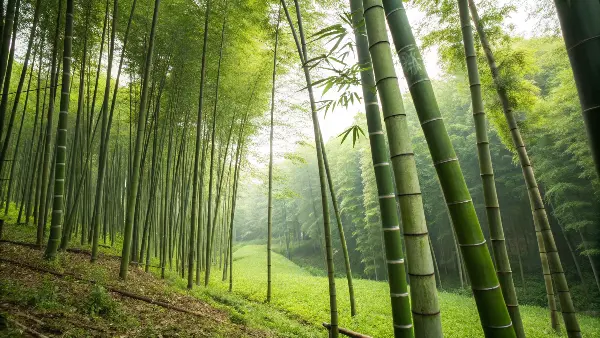
It’s easy to see "bamboo" on a label and assume it’s the perfect green choice. But as a professional in this field, I know you need more than just a label. You need to understand the ‘why’ and the ‘how’ behind its sustainability claims. The story of bamboo is about more than just fast growth; it’s about its deep, functional role in the environment. Let’s dig deeper into the specifics so you can be sure you’re making the right choice for your products and our planet.
What is the ecological significance of bamboo?
When choosing a new material, it’s easy to get lost in the technical specs and lose sight of the bigger picture. You might wonder if bamboo is just another fast-growing plant or if it holds a deeper environmental importance. Let’s break down exactly why bamboo is a cornerstone species in many ecosystems and a key player in global sustainability efforts.
The ecological significance of bamboo lies in its remarkable ability to rapidly restore degraded lands, act as a massive carbon sink, and support biodiversity. As one of the fastest-growing plants on Earth, it provides a continuous and renewable source of biomass for both ecological functions and human use. This makes it a pivotal resource for improving environmental health and building a green economy, moving us away from slow-growing timber.
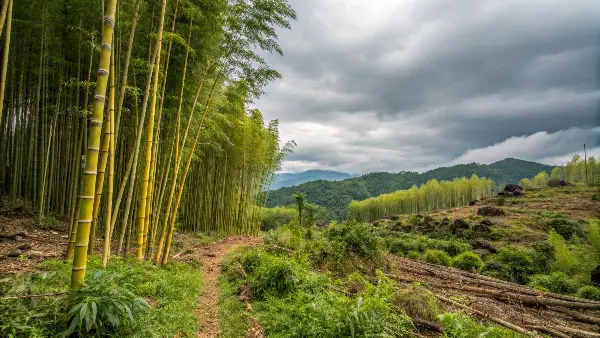
Bamboo’s significance goes far beyond being a simple substitute for wood or plastic. It’s a dynamic, living system that actively heals the environment. I’ve worked with many partners who are initially surprised to learn just how multifaceted this plant is. It’s not just a material; it’s an environmental solution.
A Carbon Sequestration Powerhouse
One of bamboo’s most significant ecological contributions is its incredible efficiency at capturing carbon dioxide. While all plants absorb CO2, bamboo is in a class of its own. Studies have shown that a bamboo forest can sequester significantly more carbon per hectare than a young forest of trees. This is largely due to its rapid growth cycle and its dense underground root system, known as rhizomes. The carbon isn’t just stored in the visible stalks (culms) but also in this extensive root network and the soil it enriches. When we harvest the culms for products, the rhizome system remains intact, ready to send up new shoots and continue the carbon capture cycle uninterrupted. This makes sustainably managed bamboo a powerful tool for climate change mitigation.
A Pioneer for Land Restoration
Bamboo is what ecologists call a "pioneer species." This means it can thrive in areas where other plants struggle, such as on degraded or marginal land with poor soil quality. Its tenacious rhizome network spreads quickly, binding loose soil and preventing erosion, which is a major problem in deforested areas. In my experience sourcing materials, I’ve seen firsthand how bamboo cultivation projects can transform barren hillsides into lush, green landscapes in just a few years. This prevents landslides, protects watersheds, and kick-starts the process of ecological recovery, creating a fertile ground for other species to return.
| Feature | Moso Bamboo | Typical Hardwood Trees |
|---|---|---|
| Time to Maturity | 3-5 years | 20-60+ years |
| Harvesting Method | Selective culm cutting | Clear-cutting or selective felling |
| Regeneration | Self-regenerates from rhizomes | Requires replanting |
| CO2 Sequestration | Very High | Moderate to High |
| Required Inputs | Low (minimal pesticides/fertilizers) | Varies, often requires more inputs |
What is the ecological role of bamboo?
You understand bamboo’s significance, but what does it actually do in nature day-to-day? It’s one thing to know a material is important, but another to grasp its specific functions in the wild. Without understanding its active roles, it’s hard to appreciate its full value. Let’s explore the practical jobs bamboo performs to keep its ecosystem healthy and balanced.
Bamboo’s primary ecological roles are soil conservation, water regulation, and providing critical habitat. Its dense, interconnected root system acts like natural rebar, binding soil to prevent erosion and landslides. The plant’s canopy and leaf litter help manage water by reducing rainfall impact and improving soil absorption. Furthermore, bamboo forests create unique microclimates and offer essential food and shelter for a wide range of wildlife, making it a cornerstone of biodiversity.
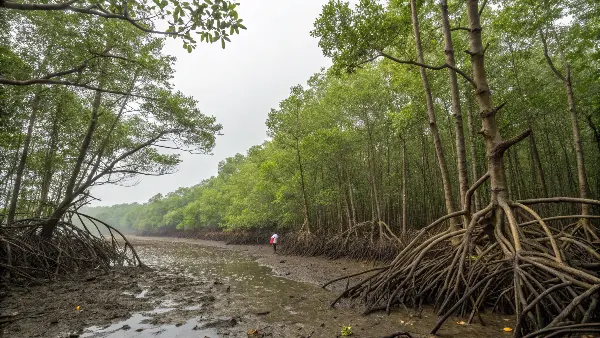
Think of a bamboo forest not as a collection of individual plants, but as a single, coordinated organism working to stabilize and enrich its surroundings. Its role is active, not passive. From the soil underfoot to the air and the animals that live within it, bamboo is constantly working to create a healthier environment.
Guardian of Soil and Water
The most fundamental role bamboo plays is protecting the land. The intricate web of rhizomes beneath the surface is incredibly effective at holding soil in place, especially on steep slopes. This is critical for preventing soil erosion during heavy rains, which in turn keeps rivers and streams from silting up. Above ground, the dense canopy of leaves intercepts rainfall, softening its impact and allowing water to drip gently to the ground. The fallen leaves create a layer of mulch that further protects the soil, helps it retain moisture, and slowly decomposes to add vital organic matter back into the earth. This entire system promotes a healthy water cycle, recharging groundwater tables rather than letting precious rainwater run off.
A Hub for Biodiversity
Bamboo forests are bustling ecosystems. They provide a unique three-dimensional habitat that supports a vast array of life. For some animals, like the iconic Giant Panda and the Red Panda, bamboo is the primary food source. But the relationship goes much deeper. Birds nest in the dense canopy, insects find shelter within the hollow culms, and small mammals hide from predators among the thickets. The forest floor, enriched by decaying leaves, supports a rich community of fungi and invertebrates that are the foundation of the food web. In this way, a bamboo forest is not just a collection of plants; it’s a living community and a biodiversity hotspot.
A Natural Purification System
Beyond providing structure and food, bamboo also helps cleanse the environment. It’s known for its ability to absorb heavy metals and other toxins from contaminated soil, a process called phytoremediation. In some agricultural areas, bamboo is planted as a natural barrier to absorb excess nitrogen and phosphorus from fertilizer runoff, preventing these pollutants from entering waterways and causing harmful algal blooms. This filtration capacity makes it a valuable asset in restoring the ecological balance of an area.
What is the ecological impact of bamboo?
Every material has an environmental footprint, and it’s easy to focus only on the positives. But as a sourcing professional, you know that ignoring potential downsides can lead to poor decisions and damage your company’s credibility. To make a truly informed choice, we must take a balanced look at both the positive and negative ecological impacts tied to bamboo.
The ecological impact of bamboo is overwhelmingly positive when it’s managed responsibly. It improves soil health, captures vast amounts of carbon, and requires few agricultural inputs. However, negative impacts can arise from poor practices. Converting diverse natural forests into bamboo monocultures, for example, would harm biodiversity. Additionally, using harsh chemicals to process bamboo into textiles like viscose/rayon can cause significant water pollution. Sourcing from certified, responsibly managed forests is essential.
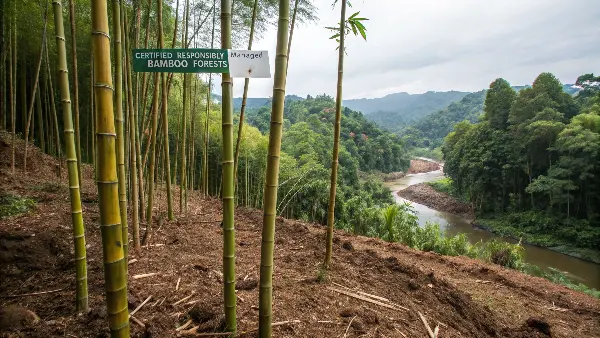
I always advise clients like Jacky that a material is only as sustainable as its supply chain. The key is distinguishing between best practices and irresponsible shortcuts. The potential for negative impact is real, but it’s also avoidable. Understanding the difference is what separates a truly sustainable product from a case of greenwashing.
The Positive Impact of Sustainable Cultivation
When grown and harvested correctly, bamboo is an environmental powerhouse. We’ve already touched on many of these benefits, but they are worth summarizing as its primary impact. First, its rapid growth and regeneration from existing roots mean it can be harvested annually without depleting the forest, a stark contrast to the decades-long cycle of timber. This cycle actively prevents deforestation by providing a reliable alternative to logging old-growth forests. Second, its ability to thrive without pesticides or chemical fertilizers means less pollution running into our soil and water. Finally, its superior carbon sequestration and soil-binding properties actively reverse environmental damage. These positive impacts are the foundation of bamboo’s reputation as a hero material.
Potential Negative Impacts to Address
It would be irresponsible to ignore the potential downsides. The primary concern is land use. If natural, biodiverse forests are cleared to make way for a bamboo plantation, the net result is a loss of habitat and biodiversity. This is a classic monoculture problem, and it’s why we at Ecosourcecn insist on sourcing from existing bamboo forests or land that is degraded, not from converted primary forests.
Another major area of impact is processing. To turn hard bamboo into soft fibers for textiles like rayon or viscose, a chemical-heavy process is often used. This can release harmful pollutants if not managed in a closed-loop system. That’s why for products like our tableware and packaging, we focus on mechanical processing—crushing, pulping, and pressing the bamboo. This method uses heat and water, not harsh chemicals, preserving the material’s environmental integrity.
| Practice Area | Sustainable Approach (Positive Impact) | Unsustainable Approach (Negative Impact) |
|---|---|---|
| Sourcing & Land Use | Harvesting from existing, well-managed forests or degraded land. | Clearing native forests to plant bamboo monocultures. |
| Harvesting | Selective, manual harvesting of mature culms, leaving the root system and young shoots intact. | Clear-cutting the entire grove, damaging the root system and soil. |
| Material Processing | Mechanical methods (pulping, pressing) for products like tableware; closed-loop systems for textiles. | Chemical-intensive processing (e.g., for rayon) with poor waste management. |
| Certification | Sourcing from FSC (Forest Stewardship Council) certified forests. | Using uncertified sources with no transparency in practices. |
What is the role of bamboo in sustainable development?
We’ve explored the ecology, but how does this all translate into the real world of business, communities, and global progress? It can seem like a big leap from a plant in a forest to a product in your inventory. Let’s connect these dots to see how bamboo’s natural strengths make it a powerful driver for sustainable development worldwide.
Bamboo performs a vital role in sustainable development by supporting its three key pillars: environmental, social, and economic. Environmentally, it fights climate change and deforestation. Socially, it creates stable livelihoods for rural communities through farming and craftsmanship. Economically, it fuels a rapidly growing global market for green products, from construction materials to our compostable packaging, fostering a truly circular economy.
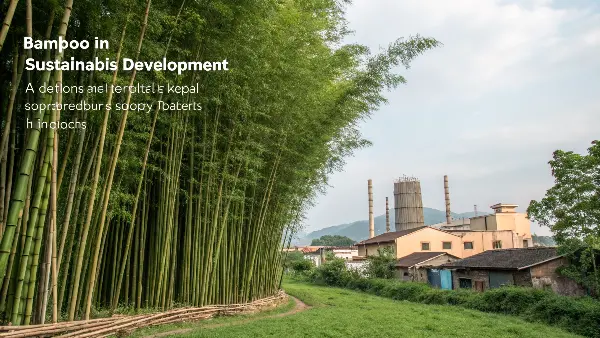
Sustainable development is about meeting the needs of the present without compromising the ability of future generations to meet their own. It’s a balance of "planet, people, and profit." Bamboo is one of the few resources that can deliver tangible benefits across all three areas simultaneously. For my business, this is the ultimate goal: to provide solutions that aren’t just good for a client’s bottom line, but are also good for the communities we source from and for the planet itself.
The Economic Pillar
The global demand for sustainable products is exploding, and bamboo is at the center of this economic shift. An entire industry has been built around it, generating billions of dollars in revenue and creating jobs all along the supply chain. This includes everything from the farmers who cultivate it to the artisans who craft it into goods and the companies like ours that export it worldwide. For businesses, bamboo offers a cost-effective, high-performance, and versatile raw material for an enormous range of products: packaging, tableware, paper, building materials, fabrics, and more. This economic viability provides a powerful incentive for businesses and governments to invest in sustainable practices.
The Social Pillar
Beyond the large-scale economy, bamboo is a cornerstone of rural life for millions of people. In many developing nations, bamboo is a "poor man’s timber," a readily available resource for building homes, making tools, and cooking fuel. The rise of the commercial bamboo industry provides a critical opportunity for poverty alleviation. It allows smallholder farmers to earn a stable income from their land without having to migrate to cities. It empowers local communities, often with a focus on women, by creating jobs in harvesting and primary processing. This social impact is a crucial, human element of sustainable development that I am proud to support through responsible sourcing.
The Environmental Pillar
The environmental benefits we’ve discussed are the bedrock upon which the other pillars stand. Without bamboo’s rapid growth, carbon sequestration, and soil protection, its economic and social benefits would be short-lived. By providing a renewable alternative to timber, bamboo helps preserve precious old-growth forests and their biodiversity. By restoring degraded land, it enhances agricultural productivity and water security. This environmental healing directly supports community resilience and creates a stable foundation for long-term economic prosperity. It’s the perfect example of how doing right by the planet also does right by its people.
Conclusion
Bamboo is far more than just a fast-growing plant; it’s a dynamic ecological powerhouse. Its ability to sequester carbon, restore land, and support biodiversity, combined with its socio-economic benefits, prove its status as a top-tier sustainable resource. However, its ultimate green credential depends entirely on responsible sourcing and processing—a commitment we stand by.


